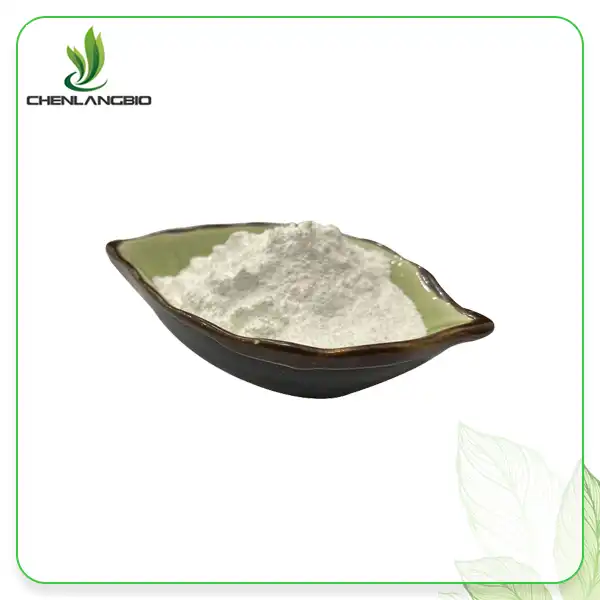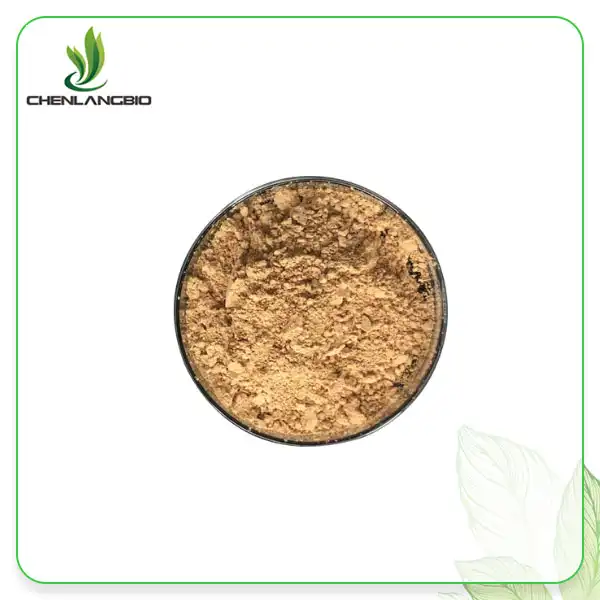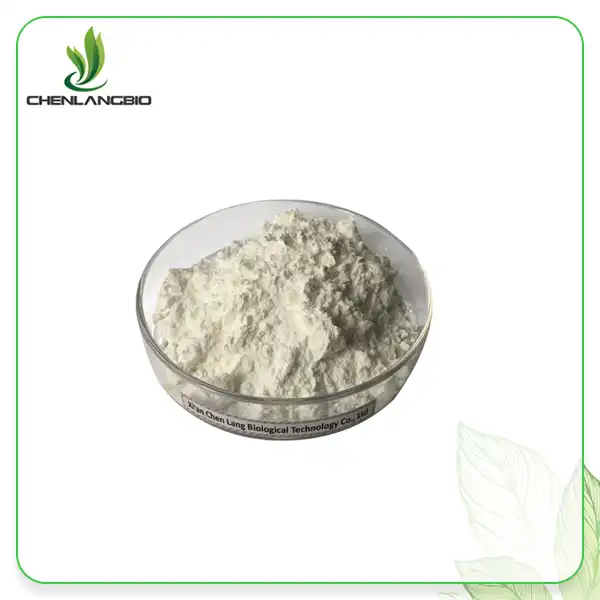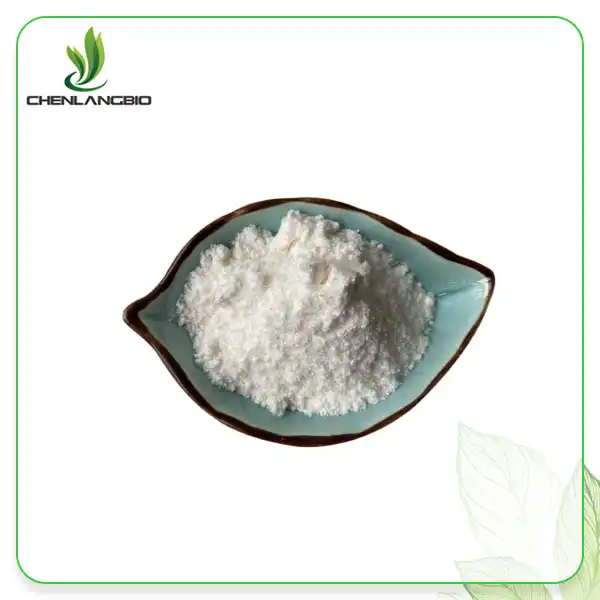What Is the Difference Between Ascorbic Acid and Sodium Ascorbyl Phosphate
2024-07-13 13:56:37
Because of its potent antioxidant qualities and capacity to stimulate the creation of collagen, ascorbic acid, sometimes referred to as vitamin C, is a widely used component in skincare products. It can irritate skin that is sensitive, though, and it has certain stability problems. On the other hand, sodium ascorbyl phosphate (SAP) is a more mild and stable water-soluble derivative of vitamin C that has comparable advantages. This blog post will discuss the distinctions between sodium ascorbyl phosphate and ascorbic acid, as well as why powdered sodium ascorbyl phosphate may be a preferable option for your skincare regimen.
How Does Sodium Ascorbyl Phosphate Differ from Ascorbic Acid in Stability?
Stability in Skincare Formulations
Stability is one of the key distinctions between sodium ascorbyl phosphate and ascorbic acid. Ascorbic acid is known to be very unstable and prone to fast oxidation when exposed to heat, light, and air. Oxidation may turn a product brown and give it an unpleasant smell, which can reduce its usefulness. However, sodium ascorbyl phosphate has significantly greater stability in formulations. It is a more trustworthy alternative for skincare products since it is less prone to oxidation and retains its efficacy for a longer duration.
Shelf Life and Packaging
A longer shelf life for items containing sodium ascorbyl phosphate is another benefit of its stability. Sodium ascorbyl phosphate formulations are more forgiving than ascorbic acid-based solutions, which must be packaged hermetically and opaquely to reduce exposure to light and air. Their quick deterioration may be avoided when storing them in a greater range of packaging options, so offering greater flexibility to producers and customers alike.
pH Compatibility
Ascorbic acid requires a low pH environment (typically below 3.5) to remain stable and effective, which can be irritating to sensitive skin. In contrast, sodium ascorbyl phosphate is effective at a neutral pH, making it less likely to cause irritation. This compatibility with a broader pH range allows for more versatile formulations that can be tailored to different skin types, including those with sensitive skin.
What Are the Benefits of Using Sodium Ascorbyl Phosphate Over Ascorbic Acid?
Gentleness on the Skin
One of the primary benefits of sodium ascorbyl phosphate is its gentleness on the skin. Ascorbic acid, with its low pH, can cause stinging, redness, and irritation, especially for those with sensitive or reactive skin. Sodium ascorbyl phosphate, with its neutral pH, is much milder and less likely to cause adverse reactions. This makes it a more suitable option for individuals who have experienced irritation from traditional vitamin C products.
Effectiveness in Treating Acne
sodium ascorbyl phosphate has been shown to have antimicrobial properties, making it effective in treating acne. It can help reduce the growth of acne-causing bacteria and reduce inflammation, leading to clearer skin. Ascorbic acid does not possess these antimicrobial benefits, making sodium ascorbyl phosphate a more effective choice for those dealing with acne-prone skin.
Antioxidant Protection
Both ascorbic acid and sodium ascorbyl phosphate offer strong antioxidant protection, helping to neutralize free radicals that can cause premature aging and skin damage. However, due to its superior stability, sodium ascorbyl phosphate can provide more consistent antioxidant benefits over time. This stability ensures that the product remains effective throughout its use, delivering continuous protection against environmental stressors.
Collagen Production
Collagen production is essential for maintaining skin firmness and elasticity. While ascorbic acid is well-known for its ability to stimulate collagen synthesis, sodium ascorbyl phosphate is equally effective in promoting collagen production. This makes SAP a valuable ingredient for anti-aging skincare, helping to reduce the appearance of fine lines and wrinkles and improve overall skin texture.
Can Sodium Ascorbyl Phosphate Be Used in Combination with Other Skincare Ingredients?
Compatibility with Niacinamide
Sodium ascorbyl phosphate is highly compatible with niacinamide, another popular skincare ingredient known for its anti-inflammatory and skin barrier-enhancing properties. Together, they can provide a powerful combination of benefits, including improved skin tone, texture, and hydration. Unlike ascorbic acid, which can sometimes react with niacinamide and cause redness or flushing, sodium ascorbyl phosphate works harmoniously with this ingredient, making it a safer choice for multi-ingredient formulations.
Pairing with Hyaluronic Acid
Hyaluronic acid is a hydrating powerhouse that pairs well with sodium ascorbyl phosphate. This combination can enhance the skin’s moisture levels, leading to a plumper, more hydrated complexion. Sodium ascorbyl phosphate’s stability ensures that its antioxidant and collagen-boosting benefits are maintained, while hyaluronic acid helps to lock in moisture and improve overall skin health.
Safe Use with Retinol
Retinol, a derivative of vitamin A, is another potent anti-aging ingredient that can be used alongside sodium ascorbyl phosphate. While combining retinol with ascorbic acid can sometimes lead to increased irritation due to their differing pH levels, sodium ascorbyl phosphate’s neutral pH makes it less likely to cause irritation when used with retinol. This allows for a more effective anti-aging regimen without compromising skin comfort.
Avoiding Incompatible Ingredients
Certain ingredients may not pair well with sodium ascorbyl phosphate. For instance, benzoyl peroxide can oxidize and reduce the effectiveness of SAP. Similarly, copper peptides should be avoided as they can destabilize vitamin C derivatives. Always check the ingredient list of your skincare products to ensure compatibility and maximize the benefits of sodium ascorbyl phosphate.
How Do You Incorporate Sodium Ascorbyl Phosphate into Your Skincare Routine?
Understanding Product Formulations
When incorporating sodium ascorbyl phosphate into your skincare routine, it is important to choose products that are specifically formulated to include this ingredient. These can come in the form of serums, moisturizers, or creams. Look for products that clearly state sodium ascorbyl phosphate as one of the key active ingredients to ensure you are getting the intended benefits.
Application Order
The order in which you apply your skincare products can impact their effectiveness. Typically, you should apply products from the thinnest to the thickest consistency. Sodium ascorbyl phosphate serums are usually lightweight and should be applied after cleansing and toning. Follow with your moisturizer and sunscreen if used in the morning. This ensures that the active ingredients are properly absorbed and can work effectively on your skin.
Frequency of Use
sodium ascorbyl phosphate can be used daily, both in the morning and evening. Start by incorporating it into your evening routine to allow your skin to adjust. Once your skin has acclimated, you can also use it in your morning routine. Regular use is key to achieving the best results, so be consistent with your application.
Patch Testing
As with any new skincare product, it is essential to perform a patch test before incorporating sodium ascorbyl phosphate into your routine. Apply a small amount of the product to a discreet area of your skin and monitor for any adverse reactions over 24 hours. If no irritation occurs, you can safely use the product on your face. Patch testing helps prevent potential reactions and ensures that your skin tolerates the ingredient well.
What Results Can You Expect from Using Sodium Ascorbyl Phosphate?
Initial Improvements
Most individuals start to notice initial improvements in their skin within a few weeks of using sodium ascorbyl phosphate. These early changes can include enhanced hydration, reduced redness, and a brighter complexion. Consistency is key, so ensure you use the product as directed for the best results.
Long-Term Benefits
For more significant improvements, such as reduced hyperpigmentation, fine lines, and overall skin texture, it may take several months of consistent use. The skin’s natural renewal process takes time, and regular use of sodium ascorbyl phosphate can gradually transform your complexion. Patience and persistence are essential to achieving and maintaining these long-term benefits.
Monitoring Progress
Keep track of your skin’s progress by taking regular photos and noting any changes in your complexion. This can help you monitor the effectiveness of sodium ascorbyl phosphate and make any necessary adjustments to your routine. Consulting with a dermatologist can also provide valuable insights and recommendations based on your skin’s specific needs.
Adjusting Your Routine
As your skin improves, you may need to adjust your skincare routine to maintain the results. This can include incorporating additional treatments or adjusting the frequency of use. Regularly reassessing your skin’s needs and making appropriate changes can help you sustain the benefits of sodium ascorbyl phosphate over time.
Conclusion
Understanding the differences between ascorbic acid and sodium ascorbyl phosphate can help you make informed decisions about your skincare routine. Sodium ascorbyl phosphate offers improved stability, gentleness, and versatility, making it an excellent alternative for those seeking the benefits of vitamin C without the drawbacks of ascorbic acid. By incorporating sodium ascorbyl phosphate into your skincare regimen, you can achieve healthier, more radiant skin. For more personalized advice or to learn about our SAP products, feel free to contact us at admin@chenlangbio.com.
References
Healthline | The Benefits and Uses of Sodium Ascorbyl Phosphate
Byrdie | Sodium Ascorbyl Phosphate: What It Is and How It Benefits Your Skin
Allure | Everything You Need to Know About Sodium Ascorbyl Phosphate
Paula’s Choice | What is Sodium Ascorbyl Phosphate and How Does it Benefit Skin?
The Ordinary | Sodium Ascorbyl Phosphate 12% Solution
Send Inquiry
Related Industry Knowledge
- How Does Hydrolyzed Keratin Strengthen Damaged Hair?
- What are the Benefits of Liposomal Coenzyme Q10?
- What are the Differences between Calcium Alpha-Ketoglutarate and Other Calcium Supplements?
- Is Acetyl Hexapeptide-8 Safe for Skin?
- How Does Kopexil Compare to Minoxidil?
- How to Use Centella Asiatica for Skin
- How Does Glabridin Powder Compare to Other Skin Lightening Agents
- Can l Use Monobenzone for Skin Lightening
- Is Loratadine Good for Poison Ivy
- Can I Use Sodium Ascorbyl Phosphate with Niacinamide










